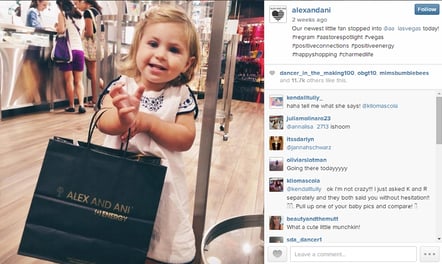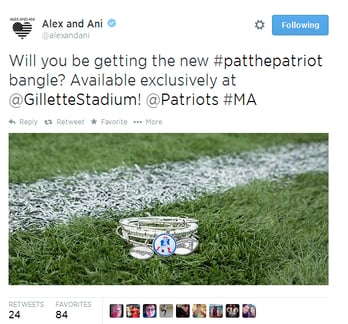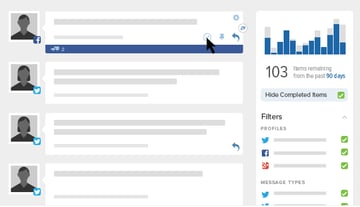Social Media Magic Tricks

What social media tactics are most effective?
Marketers struggling to provide a response are not alone. In fact, it is the number-one question that more than 90 percent of marketers want answered. According to the 2014 Social Media Marketing Industry Report, the other top two questions marketers have are, "What are the best ways to engage my audience with social media" and "How do I measure the return on my social media marketing?"
Despite the fact that those responsible for social media within their enterprises struggle to answer some pretty basic questions about their time spent on Facebook, Twitter, Google+ and other popular networks, companies willing to learn and apply the tricks of some of the most socially savvy brands can analyze and optimize their way to the top - and experience some of the much-hyped social media magic.
REVEALING ROI SECRETS
The most important element of any good social media initiative is being able to measure the business value that it provides, yet upward of 70 percent of companies are unable to show the ROI of their efforts - even those that have adopted social media analytics solutions.
This isn't for lack of trying, but even in 2014 - 10 years after Facebook received its 1 millionth registered user - the majority of large, successful brands are relying on unsophisticated metrics to warrant the time and money they allocate to social marketing.
When Forrester Consulting and Spredfast asked enterprises with more than $1 billion in revenue how they measure the business value of social media, they responded that "reach" and "resonance" are the top two measurement areas.
More specifically, 76 percent of these organizations use volume metrics (the number of individuals reached by social messaging) to measure performance and 73 percent also indicated they use resonance (engagement metrics such as responses, comments and shares) to attach business value to their social participation. Volume and engagement are not only two basic and accessible metrics to monitor, but they also work well with the respondents' top business objectives of social marketing programs: brand awareness and customer loyalty.
The idea of increasing brand awareness and customer loyalty is all well and good, but more revenue-focused goals, like driving conversions and website traffic, can also be accomplished by analyzing and optimizing volume (or reach).
When Volume Disappears
Twitter, Facebook and Pinterest present some rather intriguing social commerce opportunities (see examples of social shopping in action) but a brand's website still presents the most conversion opportunities. Take Hard Rock for example. Regardless of its millions of Facebook likes or hundreds of thousands of Twitter followers, HardRock.com is where the global brand can truly activate its audience, because that is where consumers can book rooms, shop for Hard Rock swag and sign up for its popular rewards program. (Read about how Hard Rock recently launched a mobile version of its rewards experience with Usablenet.)
In order to get social users to its website Hard Rock fans need to see posts, which often contain links to the site. Like many brands, however, Hard Rock was hit hard by Facebook's late 2013 algorithm change, which sent organic reach into a tailspin. A Social@Ogilvy study showed that of 106 brand pages it had administrator access to, organic reach declined from about 12 percent to roughly 6 percent in a four-month period (Oct. 2013 to Feb. 2014). This is in line with what many other brands reported as well.
With single-digit reach, brands struggled to achieve any of their goals for the organic content they were sharing.
Bring the Conversation Home
Despite Facebook disappointing (and downright frustrating) social media managers, many faced no other option than to analyze and optimize their efforts to increase organic reach, as was the case with Hard Rock. Of their many tests, Kim Matlock, senior director of digital marketing and CRM at Hard Rock, and her team, found that by posting directly on Facebook, rather than scheduling its Facebook posts from its social media management tool Hootsuite, the company's organic reach started to increase. This may be because by scheduling posts directly within Facebook social media managers can edit posts that contain links. When posting directly on Facebook, social media managers can edit descriptions and add images to make posts look more appealing to end-users, possibly resulting in an increase in engagement and therefore volume. Website Magazine took Hard Rock's advice and also started to see organic reach increase when posting and scheduling posts directly on Facebook - rather than through Sprout Social. Sprout Social is a highly effective tool for scheduling Twitter and Google+ posts, as well as brand monitoring, customer service and more, but it, like Hootsuite, lacks the ability to granularly edit Facebook posts.
The deep dive in organic reach on Facebook, however, was enough to push Hard Rock to explore other social options. For starters, Matlock and her team started to invest more time in Instagram - a smart move for a company that seemingly has a very millennial audience, which is a group highly active on Instagram. The foreseeable problem with Instagram, however, is that it's owned by Facebook. It wouldn't be a stretch to speculate that it's only a matter of time before the visually based social network adapts a more monetized approach for allowing businesses to reach customers on its network. In the past few months alone, Instagram has released a suite of business tools for advertisers. As Facebook looks to collect on some of the $1 billion it paid for the social network, early partners like Macy's and PayPal have already started to advertise on Instagram.
Rather than wait until Instagram becomes a highly monetized channel, savvy brands are finding ways to bring the social conversation back to their own website. Hard Rock, for example, deployed a service called Olapic (to supplement its other social efforts), which curates all the user-generated content (UGC) that is being shared on Facebook, Twitter, Tumblr and Vine and brings the content to HardRock.com, where (again) people can book rooms, shop and sign up for its rewards program. Olapic also allows for social users to upload pictures directly to HardRock.com, bringing the social conversation home (where it really belongs).

Using Olapic, Hard Rock brings social content to its website, where conversion opportunities abound.
Magic Trick: Sales & Social
Brands with more than $1 billion in revenue may be overwhelmingly using volume and engagement metrics to measure social's ROI, but some brands are doing more (a lot more). See which platforms are in use by savvy enterprises that are tying sales to social, users to CRM profiles and more.
PULLING ENGAGEMENT OUT OF A HAT
As seen in Forrester's previously mentioned research, marketers put a high priority on engagement, which indicates the level of interest and interaction from social audiences. Engaging today's socially savvy consumers often comes down to creating and sharing original, high-quality content.
The good news is that 'Net professionals don't need to be a designer, writer or billion dollar company to create compelling content that increases engagement.
Every Magician Needs an Assistant
Marketers are strapped for time. Not only are most managing social media on top of other job responsibilities, but they are also trying to analyze their time spent on the network (to prove their worth and optimize posts based on that analysis) - leaving little time for actual content creation. This is one of the many reasons that brands love user generated content. Better yet, UGC is one of the most influential forms of content there is, as it is seen as more authentic than content that brands create. In addition, more than half of those born between 1977 and 1995 leverage UGC to help them make purchasing decisions.
Encouraging UGC
Alex and Ani is one company effectively using the content that its brand advocates are creating on social, as UGC plays a major role in Alex and Ani's social presence. For the unfamiliar, Alex and Ani is an ecofriendly jeweler that enjoys revenue in the hundreds of millions of dollars and is a case study in digital marketing done right. Its products are made sustainably, made in America and all of its popular charm bracelets offer positive messages about the things its shoppers care about, like friends, family and football (see images). Further, those who wear Alex and Ani charm bracelets border on the fanatical in their desire to get the newest bracelet to stack on their arms and show off to their peers.



Alex and Ani uses a mix of branded posts and user generated content to engage its loyal audience.
UGC like this is free, ready-made content that is sure to resonate with an audience, because viewers are likely a lot like the people who originally shared the content. UGC is also a good indication of an engaged audience, as users willingly share pictures of products and brand messaging with their network of peers and influence their purchasing decisions in the process.
Hashtag Magic
One way brands can encourage their followers to create UGC is by launching hashtag campaigns. Hashtags of course group similar messaging on Facebook, Pinterest, Instagram and Twitter. For Alex and Ani, the hashtag #CharmedArms serves as a calling card of sorts for people who stack their charm bracelets, take a picture of their charm bracelets and post that picture to social media with the hashtag.
How do brands create a hashtag campaign? For that answer, let's turn to Nordstrom. When Nordstrom's anniversary sale came around this summer, it included a postcard-sized flier in each of its packages that had items from the sales event. The flier included the hashtag #NSALE, which essentially asked customers to "show them their stuff." And share they did (see image above). Not only did users get in on the action, showing off all their "steals," but influential bloggers also shared their bargains on both social media and within their blogs (earning Nordstrom high-authority links in the process).
Nordstrom was smart in asking people to share their products, because both moms and millennials (two sought-after demographics for retailers) are actively sharing products on social media. Plus, when customers share products, they are influencing the buying decisions of others. So what did Nordstrom do right with its #NSALE campaign? Not only did its marketers keep the hashtag short (definitely a best practice), but they also promoted the hashtag (on marketing collateral like fliers, social media posts, website copy) and monitored its use. What's more, marketers responded to users who were sharing their purchases and using #NSALE - another best practice, as it's not enough to simply promote a hashtag campaign, but a brand must also be prepared to actively participate in the conversation that it started.
Stealing the Spotlight
Even when a marketer does follow all of the best practices, some hashtag campaigns will just never catch on. Alex and Ani obviously has a good thing going for it with its #CharmedArms hashtag as does Nordstrom with #NSALE, but there will be times when brands need to simply follow the crowd and use already-popular hashtags that are relevant to their audiences. There are a few ways brands can research hashtags for their campaigns. Services like bottlenose.com and hashtagify.me allow marketers to find the best hashtags to reach their audiences, while Twitter always reveals which hashtags and subjects are trending in a particular location. Brands may also want to steal some of the spotlight from their competitors by seeing which hashtags they are using. If they aren't clearly branded hashtags (like Nordstrom's #NSALE), marketers should consider them fair game. For example, two
popular hashtags are #OOTD for outfit of the day and #FridayFavorite. Associate Editor Allison Howen lists these hashtags and 28 others in her popular post, "30 Days of Social" at wsm.co/socialthirty.
Now You See It
The majority of the social content mentioned here (with the exception of hashtags) has a common theme: images. Social posts with pictures nearly always receive more engagement. In fact, posts with images generate 100 percent more engagement than text-only posts on Facebook. On Twitter, Tweets with images generate 35 percent more retweets than those without (according to the social networks themselves).
Luckily there are free tools like Pagemodo that can help. It allows marketers to create custom images to share on social media for free (or it has a paid version) without the need for hiring (or bothering) in-house designers.
Pagemodo offers dozens of templates that marketers can use to add images, change the copy and customize the visual content in many different ways. The result is beautiful creative assets that can be shared on social media to increase engagement. It's really as simple as dragging and dropping design elements around. Marketers can even schedule the posts from within Pagemodo, but if we've learned anything from Hard Rock, organic reach may increase when marketers post the image directly on their Facebook accounts because they can take advantage of the social network's editing features. The benefit of sharing custom content is worth the extra step.
AUDIENCE CHEERS & JEERS
For all the ways brands can reach customers on social media - both organically and paid - social isn't just a one-way conversation. Brands that are actively analyzing and optimizing their social media efforts are the ones that know that customers are talking about them on social media - both negatively and positive - so they are using social media as a customer service channel, particularly on Twitter where people expect a near-real-time response. Despite the fact that customers expect immediate replies from the brands they are doing business with, many large brands fail to respond to their customers on social.
In fact, Sept. 2014 findings from Sprout Social indicated that 5 out of 6 messages to brands go unanswered on social media - numbers that surely back up the importance of the social media management platform's new "Smart Inbox" feature, which shows a marketer how many messages they need to respond to and lets them assign messages to appropriate team members. It's important to note that marketers do have the ability to remove certain social messages from their inboxes (like new followers, retweets, etc.) in order to organize their to-do tasks on Sprout Social.

Sprout Social's new "Smart Inbox" prioritizes customer service on social networks by giving marketers the number of messages they haven't responded to and the ability to assign messages to their colleagues.
Brands that are optimizing their digital presence by treating social media as a customer service channel, however, are providing some pretty easy-to-follow best practices to do so.
Customer Service Wand - UPS & ProFlowers
UPS presents a near-perfect example of how to leverage social media as a customer retention channel. Despite all of UPS's many resources, it would be a lot easier for the shipping and logistics company to ignore complaining customers on social media - dismissing the networks as online retention channels. Instead, UPS has created a dedicated customer service support handle on Twitter, which lets it keep all of the customer service inquiries on that Twitter handle rather than its main profile, which it can reserve for positive brand messaging.
Additionally, UPS always takes the conversation off of the public forum by asking the consumer to email them more specifics and even keeps hours of operation on its Twitter account (to do what it can to manage user expectations).
By including hours of operation that the UPS support account is manned, UPS humanizes its brand, showing that there are real people with real working hours on the other side of the screen.
Of course sometimes there's really nothing a brand can do to calm an angry customer, but managing the situation as best they can is always better than the alternative - not doing anything. ProFlowers, for example, also takes a proactive approach to social customer service.
This past Valentine's Day, customers took to Twitter in droves to complain about delayed deliveries (see "5 Twitter Takeaways from Valentine's Day Disasters" at wsm.co/0214twitter), and ProFlowers shined. "When Winter Storm Pax arrived over Valentine's Day this year, we got ahead of the chatter on social media and proactively sent an email to our customers informing them that the weather may upset their delivery," said ProFlowers Chief Consumer Experience Officer Greg Chapman. "We also tweeted to let our customers know that they could take a full refund or $20 toward their next purchase."
ProFlowers took its proactive approach one step further tweeting a picture of its office with the caption, "Tough day. Agents working overtime. Employees across our company, including our CEO, are assisting customers."
"That tweet was a part of our overall strategy that entailed genuine, transparent and constant communication of all forms to our customers," said Chapman. "We continuously monitored the situation in real-time, 24 hours a day, and kept communicating—not only responding to each and every person on social media, but also proactively communicating to show them that we care. We tried to really humanize our responses to show that we are people too and that despite the storm, we are here for them."
Twitter was just one platform that ProFlowers used to listen to its consumers and to show them how it was there for them. Chapman said his team created brand loyalty out of a very challenging situation. Read the entire interview with Chapman.
BE MAGICAL
Nothing a brand does online is independent of another, which is why brands need to think holistically about their Web success. It's only when brands look for a return on investment on all channels they are on, they engage their audiences with relevant, meaningful content and they treat all touch points as a way to support customers, will brands truly find social media magic.

Subscribe to Our Newsletter!
Latest in Social Media










